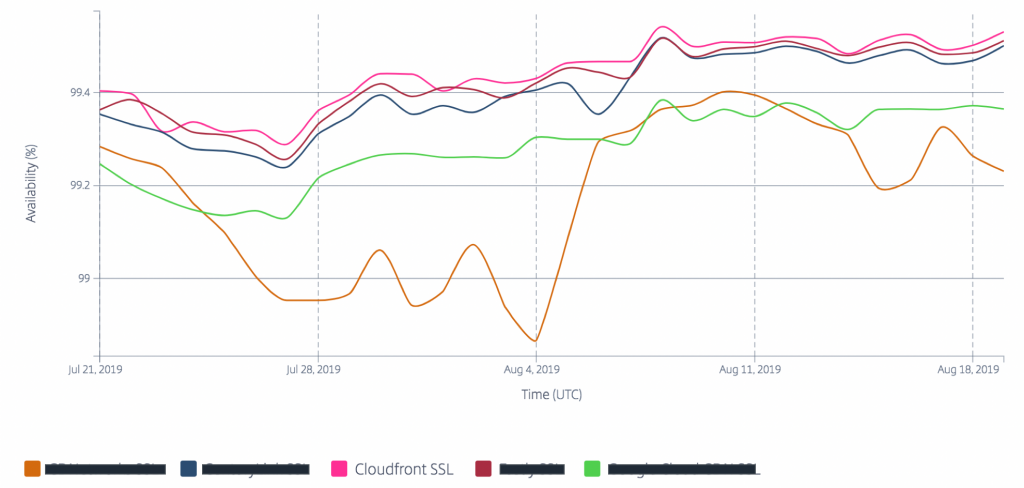Networking & Content Delivery
Category: Amazon CloudFront
Handling Redirects@Edge Part 2
In continuation with our series on Handling Redirects@Edge, in this blog post, we will explore how you can leverage Amazon CloudFront, Lambda@Edge and Amazon Simple Storage Service (S3) to offload the origin from URL redirection with more advanced capabilities. As part of this solution, we offer a simple custom-built user interface to define and manage […]
Handling Redirects@Edge Part 1
A HTTP URL redirect is a webserver function that redirects a user to a different URL from the one they originally requested. Redirections are useful when you want a short easy to remember URL which when accessed redirects you to the actual landing page. URL shortener services are a good example of this use case. […]
Accelerating WordPress with CloudFront using the AWS for WordPress Plugin
AWS for WordPress WordPress is a technological marvel in the number of internet sites it powers and the momentum with which developers actively contribute to the community. Recent estimates put WordPress at powering more than 34% of internet sites, and more than 50,000 plugins are available through WordPress.org covering everything from security enhancements to SEO […]
Using multiple content delivery networks for video streaming – part 1
Introduction Today, viewing video content is a prevalent form of online activity whether in entertainment, education, marketing, or information. For example, as a Solutions Architect at AWS, I tend to watch hours of video a week to learn about technologies, and I also leverage video content to convey ideas and best practices in a scalable […]
Generating dynamic error responses in Amazon CloudFront with Lambda@Edge
Amazon CloudFront allows you to create custom error pages for specific HTTP status codes and to change response codes. CloudFront also offers origin failover capability, with which you can easily set up failover logic between combinations of AWS origins or non-AWS custom HTTP origins. This creates minimal interruption in your viewer’s experience. However, while these […]
Authorization@Edge using cookies: Protect your Amazon CloudFront content from being downloaded by unauthenticated users
Enterprise customers who host private web apps on Amazon CloudFront may struggle with a challenge: how to prevent unauthenticated users from downloading the web app’s source code (for example, React, Angular, or Vue). In a separate blog post, you can learn one way to provide that security using Amazon Lambda@Edge and Amazon Cognito, with an example […]
TCP BBR Congestion Control with Amazon CloudFront
One of the fundamental value propositions of a content delivery network (CDN) is performance. Two of the key aspects of great performance are latency and throughput: that is, delivering a large volume of bits quickly and consistently. These attributes play a critical role in content delivery of all kinds, from video streams to API calls. […]
Leveraging external data in Lambda@Edge
Introduction Lambda@Edge is a feature of Amazon CloudFront that allows developers to implement custom logic for manipulating HTTP request/response exchanges or generating responses on the fly with low latency. Lambda@Edge empowers our customers with a full programming language (Node.js) to implement advanced logic. Learn more at edge networking with AWS. While customers often write stateless […]
Four Steps for Debugging your Content Delivery on AWS
Introduction Werner Vogels, chief technology officer for AWS, has been quoted as saying: “Everything fails all the time.” Well, his quote applies as well to content delivery with Amazon CloudFront and Lambda@Edge. In content delivery, issues might occur in different places, for example: On your origin, when it returns HTTP 5xx errors On CloudFront, when […]
Continually Enhancing Domain Security on Amazon CloudFront
Last year, a colleague of mine wrote a blog post about new security measures that Amazon CloudFront was implementing to enhance the security of how domains are used on CloudFront distributions. This included mitigations to prevent the abusive use of domain fronting practices by not allowing SSL handshake requests and subsequent requests over the secured […]








